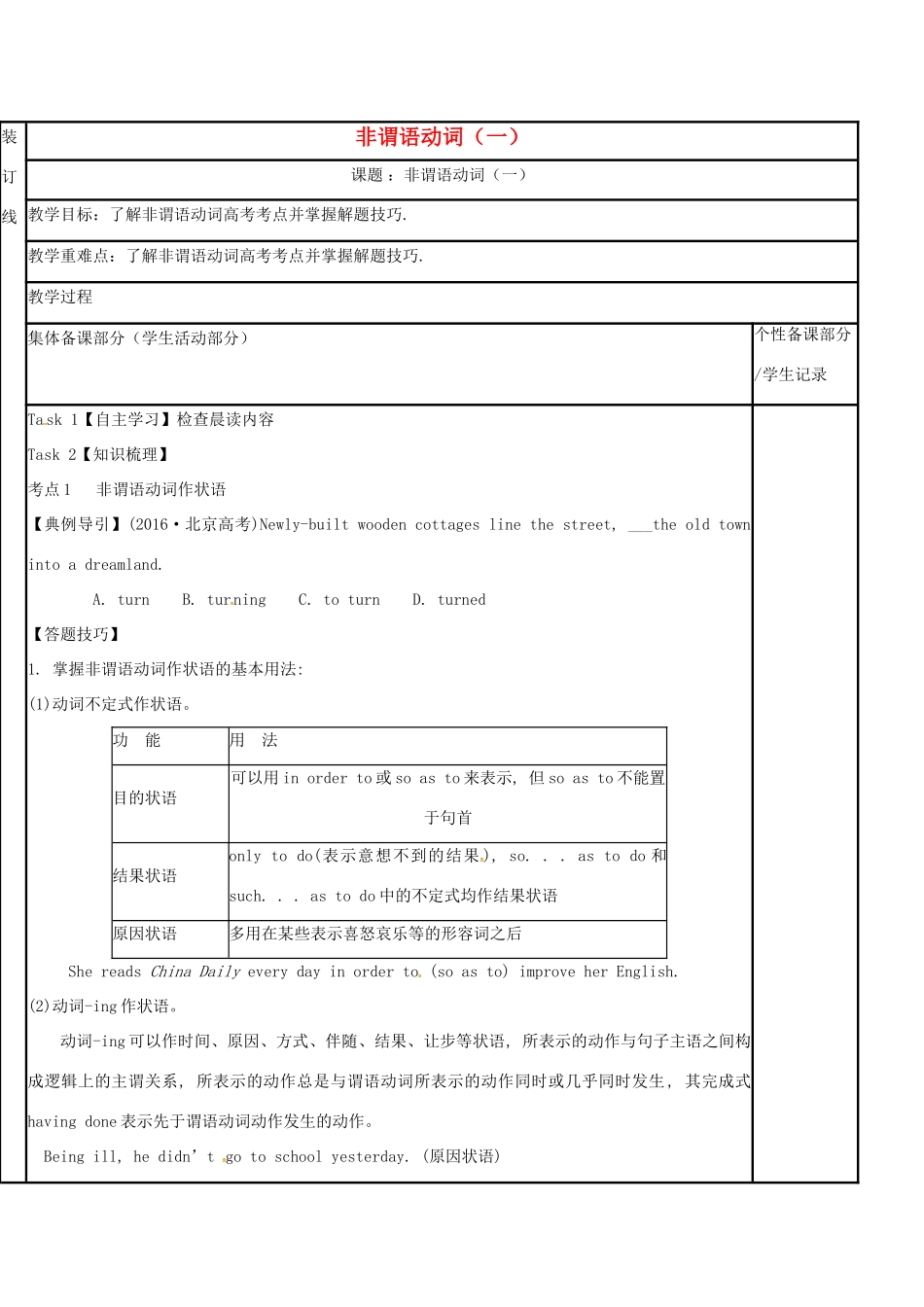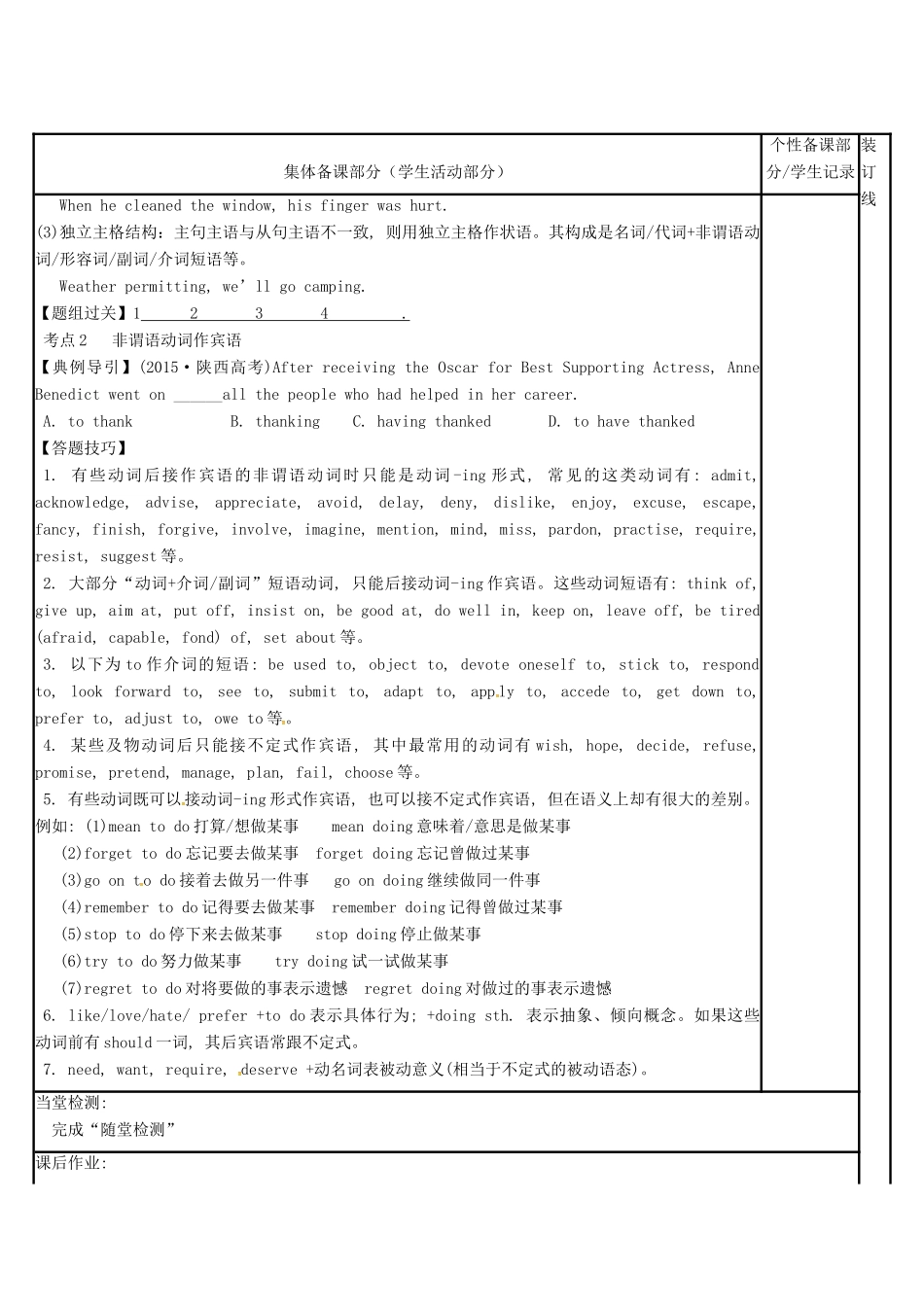装订线非谓语动词(一)课题 :非谓语动词(一)教学目标:了解非谓语动词高考考点并掌握解题技巧.教学重难点:了解非谓语动词高考考点并掌握解题技巧.教学过程集体备课部分(学生活动部分)个性备课部分/学生记录Task 1【自主学习】检查晨读内容Task 2【知识梳理】考点 1 非谓语动词作状语【典例导引】(2016·北京高考)Newly-built wooden cottages line the street, ___the old town into a dreamland. A. turn B. turning C. to turn D. turned【答题技巧】1. 掌握非谓语动词作状语的基本用法: (1)动词不定式作状语。功 能用 法目的状语可以用 in order to 或 so as to 来表示, 但 so as to 不能置于句首结果状语only to do(表示意想不到的结果 ), so. . . as to do 和such. . . as to do 中的不定式均作结果状语原因状语多用在某些表示喜怒哀乐等的形容词之后She reads China Daily every day in order to (so as to) improve her English. (2)动词-ing 作状语。动词-ing 可以作时间、原因、方式、伴随、结果、让步等状语, 所表示的动作与句子主语之间构成逻辑上的主谓关系, 所表示的动作总是与谓语动词所表示的动作同时或几乎同时发生 , 其完成式having done 表示先于谓语动词动作发生的动作。Being ill, he didn’t go to school yesterday. (原因状语)Seeing Tom, I couldn’t help thinking of his brother. (时间状语)Gathering around the fire, the tourists danced with the local people. (伴随状语)(3)动词-ed 作状语。一般式(done)同动词的-ing 形式的完成被动式(having been done)均与句中主语构成逻辑上的动宾关系, 且先于谓语动词所表示的动作发生, 表示时间、原因、方式、伴随等情况。Asked what had happened, he lowered his head. (时间状语)Inspired by what he said, we are determined to study harder. (原因状语)2. 有关非谓语动词的注意事项: (1)常见的作状语的固定短语:generally/frankly/roughly speaking 一般说来/坦白地说/粗略地说; considering. . . 鉴于/考虑到…; judging by/from. . . 从…来看, 依据…来判断; supposing/suppose that. . . 假定…; providing/provided that. . . 假定, 假如…; owing to. . . 由于…; talking/s...


